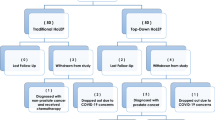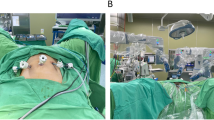Abstract
Background:
Large multicenter studies comparing outcomes between TURP and photoselective vaporization of the prostate (PVP) are sparse, with no studies having compared the influence of trainee involvement on these outcomes. Our objectives were to assess 30-day outcomes after TURP and PVP with respect to trainee involvement using an independent national surgical database.
Methods:
Using the American College of Surgeons National Surgical Quality Improvement Program (ACS NSQIP) data (2005–2011), 7893 men were identified who underwent TURP or PVP. Regression models were constructed to assess associations between surgical approach, risk-adjusted morbidity and individual complications. Relationships between operative approach, operative duration and duration of stay were also examined and subdivided based upon trainee level.
Results:
Of 7893 patients, 4950 (62.7%) underwent TURP and 2943 (37.3%) underwent PVP. TURP patients were older, more likely to have diabetes, cancer, history of steroid use and preoperative transfusion compared with PVP patients, who were more likely to have coronary artery disease or bleeding disorders. Risk-adjusted overall morbidity was similar; however, PVP was associated with less pneumonia (0.2% vs 0.5%, P<0.015), bleeding requiring transfusion (0.5% vs 1.8%, P<0.001) and return to the operating room (1.5% vs 2.2%, P<0.022). PVP patients also had shorter length of stay (0.8 vs 2.1 days, P<0.001). There were no significant differences in outcomes when a trainee was involved. Operative duration was similar for TURP and PVP when performed by an attending alone (52 vs 52 min, P<0.001), but was longer with trainee involvement, regardless of post-graduate year (PGY) level (P<0.001). Comparison of operative duration among trainee subgroups demonstrated longer operative times for the PGY 6–9 subgroup performing PVP when compared with other subgroups (P<0.003).
Conclusions:
Within ACS NSQIP hospitals, TURP and PVP demonstrated similar risk-adjusted overall morbidity. Despite longer operative times for TURP and PVP with trainee involvement, there were no significant differences in outcomes.
This is a preview of subscription content, access via your institution
Access options
Subscribe to this journal
Receive 4 print issues and online access
$259.00 per year
only $64.75 per issue
Buy this article
- Purchase on Springer Link
- Instant access to full article PDF
Prices may be subject to local taxes which are calculated during checkout

Similar content being viewed by others
References
Meigs JB, Mohr B, Barry MJ, Collins MM, McKinlay JB . Risk factors for clinical benign prostatic hyperplasia in a community-based population of healthy aging men. J Clin Epidemiol 2001; 54: 935–944.
McVary KT, Roehrborn CG, Avins AL, Barry MJ, Bruskewitz RC, Donnell RF et al. Update on AUA guideline on the management of benign prostatic hyperplasia. J Urol 2011; 185: 1793–1803.
Strope SA, Yang L, Nepple KG, Andriole GL, Owens PL . Population based comparative effectiveness of transurethral resection of the prostate and laser therapy for benign prostatic hyperplasia. J Urol 2012; 187: 1341–1345.
Lynch M, Sriprasad S, Subramonian K, Thompson P . Postoperative haemorrhage following transurethral resection of the prostate (TURP) and photoselective vaporisation of the prostate (PVP). Ann R Coll Surg Engl 2010; 92: 555–558.
Capitan C, Blazquez C, Martin MD, Hernandez V, de la Pena E, Llorente C . GreenLight HPS 120-W laser vaporization versus transurethral resection of the prostate for the treatment of lower urinary tract symptoms due to benign prostatic hyperplasia: a randomized clinical trial with 2-year follow-up. Eur Urol 2011; 60: 734–739.
Woo HH . Photoselective vaporization of the prostate using the 120-W lithium triborate laser in enlarged prostates (>120 cc). BJU Int 2011; 108: 860–863.
Sandhu JS, Ng CK, Gonzalez RR, Kaplan SA, Te AE . Photoselective laser vaporization prostatectomy in men receiving anticoagulants. J Endourol 2005; 19: 1196–1198.
Al-Ansari A, Younes N, Sampige VP, Al-Rumaihi K, Ghafouri A, Gul T et al. GreenLight HPS 120-W laser vaporization versus transurethral resection of the prostate for treatment of benign prostatic hyperplasia: a randomized clinical trial with midterm follow-up. Eur Urol 2010; 58: 349–355.
Dusing MW, Krambeck AE, Terry C, Matlaga BR, Miller NL, Humphreys MR et al. Holmium laser enucleation of the prostate: efficiency gained by experience and operative technique. J Urol 2010; 184: 635–640.
Khuri SF . The NSQIP: a new frontier in surgery. Surgery 2005; 138: 837–843.
Papandria D, Rhee D, Ortega G, Zhang Y, Gorgy A, Makary MA et al. Assessing trainee impact on operative time for common general surgical procedures in ACS-NSQIP. J Surg Educ 2012; 69: 149–155.
Rowell KS, Turrentine FE, Hutter MM, Khuri SF, Henderson WG . Use of national surgical quality improvement program data as a catalyst for quality improvement. J Am Coll Surg 2007; 204: 1293–1300.
Teng J, Zhang D, Li Y, Yin L, Wang K, Cui X et al. Photoselective vaporization with the green light laser vs transurethral resection of the prostate for treating benign prostate hyperplasia: a systematic review and meta-analysis. BJU Int 2013; 111: 312–323.
Volpe MA, Fromer D, Kaplan SA . Holmium and interstitial lasers for the treatment of benign prostatic hyperplasia: a laser revival. Curr Opin Urol 2001; 11: 43–48.
Kuntz RM, Ahyai S, Lehrich K, Fayad A . Transurethral holmium laser enucleation of the prostate versus transurethral electrocautery resection of the prostate: a randomized prospective trial in 200 patients. J Urol 2004; 172: 1012–1016.
Fraundorfer MR, Gilling PJ . Holmium: YAG laser enucleation of the prostate combined with mechanical morcellation: preliminary results. Eur Urol 1998; 33: 69–72.
Gilling PJ, Kennett K, Das AK, Thompson D, Fraundorfer MR . Holmium laser enucleation of the prostate (HoLEP) combined with transurethral tissue morcellation: an update on the early clinical experience. J Endourol 1998; 12: 457–459.
Raval MV, Wang X, Cohen ME, Ingraham AM, Bentrem DJ, Dimick JB et al. The influence of resident involvement on surgical outcomes. J Am Coll Surg 2011; 212: 889–898.
Advani V, Ahad S, Gonczy C, Markwell S, Hassan I . Does resident involvement effect surgical times and complication rates during laparoscopic appendectomy for uncomplicated appendicitis? An analysis of 16,849 cases from the ACS-NSQIP. Am J Surg 2012; 203: 347–351 discussion 351-2.
Herrick BW, Yap RL . It is safe to teach residents laser prostate surgery in the private practice setting. Urology 2013; 81: 629–632.
Acknowledgements
We are appreciative of the Tripler Army Medical Center NSQIP Surgical Clinical Nurse Reviewer, Melanie S Alano, BSN, PHN, LNC, for her assistance throughout this project.
Author information
Authors and Affiliations
Corresponding author
Ethics declarations
Competing interests
The authors declare no conflict of interest.
Rights and permissions
About this article
Cite this article
Olcese, S., Derosa, R., Kern, S. et al. Comparison of outcomes after TURP versus photoselective vaporization of the prostate with respect to trainee involvement utilizing ACS NSQIP. Prostate Cancer Prostatic Dis 17, 227–232 (2014). https://doi.org/10.1038/pcan.2014.13
Received:
Revised:
Accepted:
Published:
Issue Date:
DOI: https://doi.org/10.1038/pcan.2014.13
This article is cited by
-
The impact of surgical duration on complications after transurethral resection of the prostate: an analysis of NSQIP data
Prostate Cancer and Prostatic Diseases (2019)



